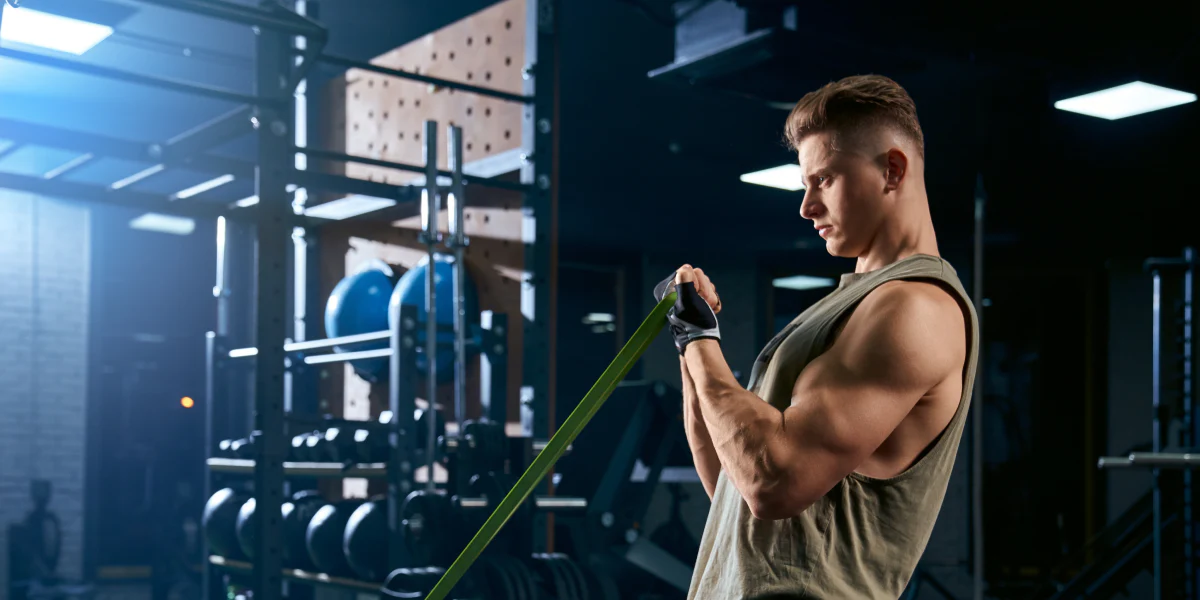In today’s fast-paced world, finding time for exercise can be a challenge. However, staying fit and healthy doesn’t necessarily require long hours at the gym. Quick workout routines can be just as effective in helping you achieve your fitness goals. This article explores various quick workout routines, their benefits, and how to integrate them into your daily life for maximum results.
Understanding Quick Workout Routines
Quick workout routines are designed to maximize your workout in a short period, often ranging from 5 to 30 minutes. These routines focus on high-intensity exercises that boost your heart rate, build strength, and improve flexibility. The primary goal is to provide an efficient and effective workout that fits into a busy schedule.
Benefits of Quick Workout Routines
Time Efficiency
One of the most significant advantages of quick workout is their time efficiency. You can achieve a comprehensive workout in a fraction of the time, making it easier to fit exercise into your daily routine. This efficiency is particularly beneficial for individuals with hectic schedules, allowing them to maintain a consistent fitness regimen without dedicating large blocks of time.
Increased Metabolism
High-intensity quick workouts, such as High-Intensity Interval Training (HIIT), can boost your metabolism. These workouts create an “afterburn” effect, where your body continues to burn calories even after you’ve finished exercising. This effect can enhance weight loss and improve overall metabolic health.
Flexibility and Convenience
Quick workouts can be done anywhere, anytime, without the need for special equipment or a gym membership. This flexibility allows you to work out at home, in the office, or even while traveling. It eliminates common barriers to exercise, such as lack of time or access to a gym.
Improved Cardiovascular Health
Short, high-intensity workouts can significantly improve cardiovascular health. They increase your heart rate, improve blood circulation, and enhance lung capacity. Regular quick workouts can reduce the risk of heart disease, lower blood pressure, and improve overall cardiovascular fitness.
Enhanced Mental Health
Exercise is well-known for its mental health benefits. Quick workouts can boost your mood, reduce stress, and alleviate symptoms of anxiety and depression. The release of endorphins during exercise promotes a sense of well-being and improves mental clarity and focus.
Types of Quick Workout Routines
High-Intensity Interval Training (HIIT)
HIIT involves short bursts of intense exercise followed by brief periods of rest or low-intensity activity. This type of workout is highly effective for burning calories, building strength, and improving cardiovascular health.
Sample HIIT Routine
- Warm-Up: 5 minutes of light jogging or jumping jacks.
- Exercise Intervals:
- 30 seconds of sprinting
- 30 seconds of rest
- Repeat for 10-15 minutes.
- Cool-Down: 5 minutes of stretching or walking.
Tabata Training
Tabata is a form of HIIT that involves 20 seconds of ultra-intense exercise followed by 10 seconds of rest, repeated for 4 minutes. It is an efficient way to boost cardiovascular fitness and burn fat.
Sample Tabata Routine
- Warm-Up: 5 minutes of dynamic stretching.
- Exercise Intervals:
- 20 seconds of burpees
- 10 seconds of rest
- 20 seconds of squats
- 10 seconds of rest
- 20 seconds of push-ups
- 10 seconds of rest
- 20 seconds of mountain climbers
- 10 seconds of rest
- Repeat the circuit twice.
- Cool-Down: 5 minutes of static stretching.
Bodyweight Exercises
Bodyweight exercises are a versatile and convenient way to build strength and endurance without the need for equipment. They can be incorporated into quick workout routines to target different muscle groups.
Sample Bodyweight Routine
- Warm-Up: 5 minutes of arm circles, leg swings, and light jogging.
- Exercise Circuit:
- 1 minute of push-ups
- 1 minute of squats
- 1 minute of plank
- 1 minute of lunges
- 1 minute of tricep dips
- 1 minute of rest
- Repeat the circuit 2-3 times.
- Cool-Down: 5 minutes of stretching focusing on all major muscle groups.
Yoga and Stretching
Yoga and stretching routines can be quick yet effective for improving flexibility, reducing stress, and enhancing overall well-being. These routines can be done in the morning to start the day or in the evening to wind down.
Sample Yoga Routine
- Warm-Up: 5 minutes of deep breathing and gentle stretches.
- Yoga Sequence:
- 1 minute of Cat-Cow Pose
- 1 minute of Downward-Facing Dog
- 1 minute of Warrior I Pose
- 1 minute of Warrior II Pose
- 1 minute of Child’s Pose
- Repeat the sequence once.
- Cool-Down: 5 minutes of seated forward bends and gentle twists.
Core Workouts
Quick core workouts can strengthen the abdominal muscles, improve posture, and enhance overall stability. These routines are essential for a balanced fitness regimen.
Sample Core Routine

- Warm-Up: 5 minutes of light cardio, such as jogging or jumping jacks.
- Core Circuit:
- 1 minute of bicycle crunches
- 1 minute of Russian twists
- 1 minute of leg raises
- 1 minute of plank
- 1 minute of rest
- Repeat the circuit 2-3 times.
- Cool-Down: 5 minutes of stretching, focusing on the core muscles.
Incorporating Quick Workouts into Daily Life
Morning Workouts
Starting your day with a quick workout can boost your energy levels, improve your mood, and set a positive tone for the day. Here are some tips for incorporating morning workouts:
- Set a Schedule: Plan your workouts for the same time each morning to establish a routine.
- Prepare in Advance: Lay out your workout clothes and equipment the night before.
- Start Small: Begin with short, manageable workouts and gradually increase the intensity and duration.
Lunch Break Workouts
Using your lunch break for a quick workout can be a great way to break up the workday and boost productivity. Here are some ideas for lunch break workouts:
- Office-Friendly Exercises: Opt for exercises that can be done in your office or a nearby park, such as walking, stretching, or bodyweight exercises.
- Stay Hydrated: Drink plenty of water before and after your workout to stay hydrated.
- Quick Recovery: Have a light, nutritious snack after your workout to replenish your energy.
Evening Workouts
Evening workouts can help you unwind after a long day and improve your sleep quality. Here are some tips for evening workouts:
- Create a Relaxing Routine: Choose exercises that help you relax and de-stress, such as yoga or light cardio.
- Avoid Heavy Meals: Try not to eat a heavy meal right before your workout to avoid discomfort.
- Consistency is Key: Stick to a regular schedule to make evening workouts a habit.
Tips for Maximizing Quick Workouts
Focus on Intensity
To make the most of your quick workouts, focus on the intensity rather than the duration. High-intensity exercises can provide significant health benefits in a short period. Push yourself to work hard during each exercise interval to maximize results.
Mix It Up
Variety is essential to prevent boredom and keep your body challenged. Mix up your workout routines by incorporating different types of exercises, such as HIIT, strength training, yoga, and cardio. Changing your workouts regularly can also prevent plateaus and promote continuous improvement.
Stay Consistent
Consistency is crucial for achieving long-term fitness goals. Aim to incorporate quick workouts into your routine at least 3-5 times a week. Even if you only have 10 minutes, a consistent effort will yield better results than sporadic, longer workouts.
Track Your Progress
Keep track of your workouts to monitor your progress and stay motivated. Use a fitness app, journal, or calendar to log your exercises, duration, and intensity. Tracking your progress can help you set realistic goals and celebrate your achievements.
Listen to Your Body
Pay attention to how your body responds to different exercises and adjust accordingly. If you feel pain or discomfort, modify the exercise or take a rest. It’s essential to balance pushing yourself with listening to your body’s needs to prevent injury and ensure long-term success.
Conclusion
Quick workout routines offer a practical and effective way to stay fit and healthy, even with a busy schedule. By incorporating various types of exercises, such as HIIT, bodyweight workouts, yoga, and core training, you can achieve a balanced fitness regimen that targets all major muscle groups and improves overall well-being. The key to success is consistency, intensity, and variety. Whether you prefer morning, lunch break, or evening workouts, integrating these quick routines into your daily life can lead to significant health benefits and help you achieve your fitness goals. Remember to stay motivated, track your progress, and listen to your body to maximize the effectiveness of your quick workouts.

